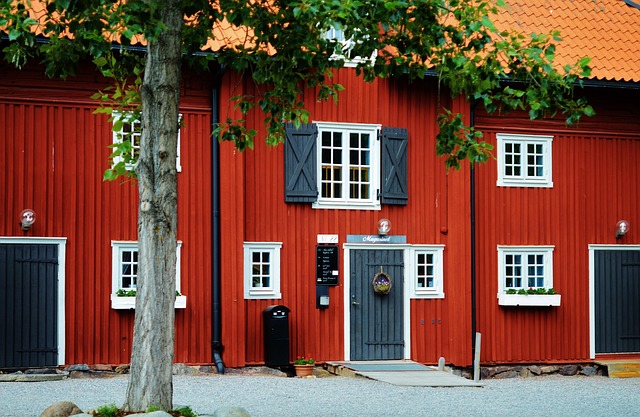Exploring Ancient Roman Ruins and Historical Landmarks

The echoes of ancient Rome still resonate through the centuries, whispering tales of grandeur, power, and innovation. From monumental amphitheaters to intricate temples, the remnants of this once-mighty empire continue to captivate travelers, historians, and dreamers alike. Embarking on a journey to explore ancient Roman ruins is not just a step back in time—it’s an immersive experience that connects us with humanity’s shared heritage. In this article, we will delve into some of the most iconic Roman ruins and historical landmarks around the world, uncovering their stories and significance.
1. The Colosseum: A Symbol of Imperial Glory
Standing proudly in the heart of Rome, the Colosseum is perhaps the most recognizable symbol of ancient Rome. This massive amphitheater, completed in 80 AD under Emperor Titus, could hold up to 50,000 spectators who gathered to witness gladiatorial contests, animal hunts, and public spectacles.
Walking through its weathered arches today, one can almost hear the roar of the crowd and feel the tension of combat. The Colosseum was more than just entertainment; it showcased the engineering prowess of the Romans, featuring advanced systems for flooding the arena to stage mock naval battles. Despite centuries of earthquakes and stone theft, the structure remains awe-inspiring—a testament to the ingenuity and ambition of its creators.
For modern visitors, exploring the Colosseum offers a glimpse into the social dynamics of Roman society. While emperors sat in luxurious boxes, ordinary citizens were segregated by class, reflecting the rigid hierarchy of the era. Today, guided tours allow you to walk beneath the arena floor, where gladiators prepared for battle, offering a deeper understanding of life in ancient Rome.
2. Pompeii: Frozen in Time
Few archaeological sites evoke as much fascination as Pompeii, the city buried under volcanic ash during the catastrophic eruption of Mount Vesuvius in 79 AD. What makes Pompeii so extraordinary is its remarkable preservation. Streets, homes, frescoes, and even the casts of victims provide an unparalleled window into daily Roman life.
As you wander through the ruins, you’ll encounter bakeries with preserved loaves of bread, vibrant murals adorning villa walls, and public baths that highlight the importance of hygiene and leisure in Roman culture. The Forum, once the bustling center of civic life, now lies eerily silent, yet filled with stories waiting to be uncovered.
Pompeii serves as both a celebration of Roman achievements and a sobering reminder of nature’s destructive power. For those seeking authenticity and emotion in their travels, Pompeii delivers an unforgettable experience that bridges the gap between past and present.
3. Hadrian’s Wall: Guarding the Edge of Empire
Stretching across northern England, Hadrian’s Wall stands as a testament to Rome’s expansive reach and strategic foresight. Commissioned by Emperor Hadrian in 122 AD, the wall marked the northern boundary of the Roman Empire, serving as both a defensive fortification and a means of controlling trade and immigration.
Today, hikers and history enthusiasts flock to this UNESCO World Heritage Site to traverse its length, marveling at the well-preserved forts, milecastles, and watchtowers. Each stone tells a story of soldiers stationed far from home, enduring harsh conditions while maintaining the empire’s borders.
Visiting Hadrian’s Wall provides a unique perspective on how geography shaped Roman military strategy. It also invites reflection on the challenges faced by those living at the edge of civilization—a stark contrast to the opulence of Rome itself.
4. The Pantheon: Architectural Marvel
No exploration of Roman ruins would be complete without visiting the Pantheon, a masterpiece of Roman architecture and one of the best-preserved buildings from antiquity. Originally built as a temple to all gods, the Pantheon later became a Christian church, ensuring its survival through the ages.
Its crowning glory is the massive dome, crowned by an oculus that allows sunlight to pour in, creating a celestial effect. The precision of its design—perfect proportions and innovative use of concrete—continues to inspire architects worldwide. Inside, the tombs of notable figures like Raphael add another layer of historical depth.
Stepping into the Pantheon feels like entering a sacred space where time stands still. Whether you’re admiring its mathematical perfection or simply basking in the serene atmosphere, the Pantheon leaves an indelible impression.
5. Leptis Magna: Jewel of Roman Africa
Located in modern-day Libya, Leptis Magna was once one of the most beautiful cities in the Roman Empire. Founded by Phoenicians and later expanded by Emperor Septimius Severus, the city boasts stunning ruins, including a sprawling forum, a magnificent theater, and intricately carved columns.
Leptis Magna exemplifies the fusion of Roman and local cultures, blending Mediterranean aesthetics with North African influences. Its remote location has helped preserve many structures, making it a hidden gem for intrepid travelers.
Exploring Leptis Magna is like stepping into a forgotten chapter of history. As you stroll along its colonnaded streets, you’ll gain insight into the cosmopolitan nature of the Roman Empire and its ability to adapt to diverse environments.
Why Visit These Ruins?
Beyond their aesthetic appeal, Roman ruins offer profound lessons about human resilience, creativity, and governance. They remind us of our capacity to build enduring legacies—and of the impermanence of even the mightiest civilizations. For travelers, these sites are not merely destinations but portals to another time, inviting contemplation and wonder.
Whether you’re standing before the towering columns of the Pantheon or tracing the footsteps of ancient inhabitants in Pompeii, each ruin carries a piece of history that enriches your understanding of the world. So pack your curiosity and embark on a journey through time—where every stone has a story to tell.



